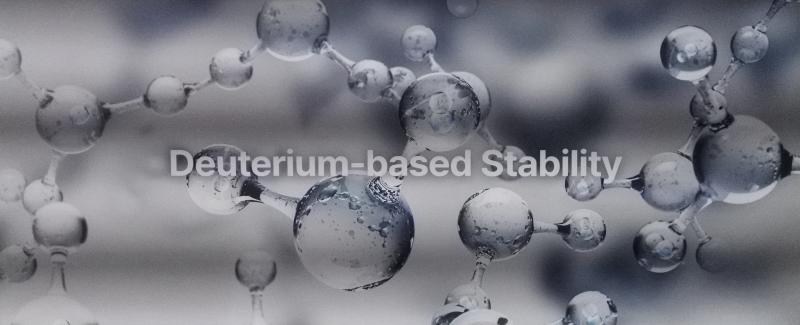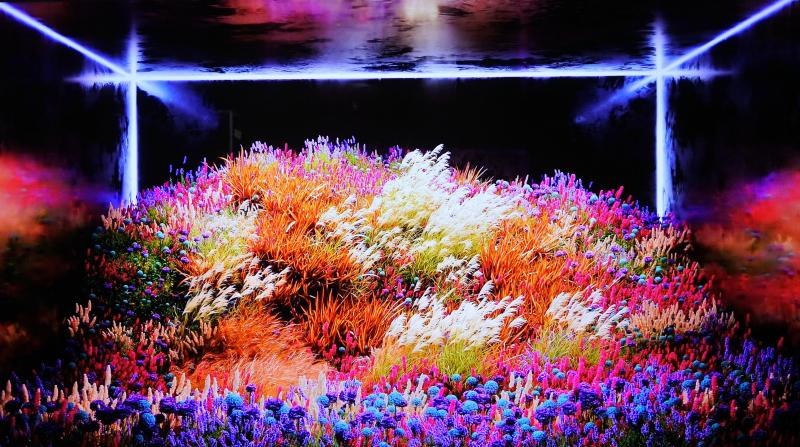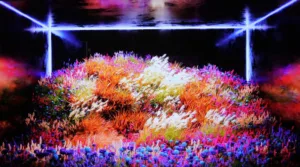It is no secret at all that at CES this past January Samsung Display Company (SDC) introduced its Quantum Dot OLED (QD-OLED) display to a limited audience and presented side-by-side comparisons with LG Display’s (LGD) well-known white OLED (WOLED) display. Among the characteristics commented on by technical journalists and analysts was the significantly greater luminance of the QD-OLED.

Last week at the 60th SID Display Week, the QD-OLED was on display to a general display audience. It would have been corporate bad manners for SDC to do a side-by-side comparison at SID, but in the adjacent booth Samsung partner and quantum-dot supplier Nanosys did provide the side-by-side, although even Nanosys did not identify the comparison set as the latest-generation LGD WOLED. As at CES, the QD-OLED was noticeably brighter.
 This graphic in LG Display’s SID 2022 booth conveyed the company’s message without communicating much understanding. In the accompanying article, Display Daily comes to the rescue. (Photo: Ken Werner) Click for higher resolution
This graphic in LG Display’s SID 2022 booth conveyed the company’s message without communicating much understanding. In the accompanying article, Display Daily comes to the rescue. (Photo: Ken Werner) Click for higher resolution
But nearby, LGD showed its new OLED.EX panel with 20 to 30 percent greater luminance, and stated the panel’s secret sauce was deuterium. To remind those readers who are years away from freshman chemistry, deuterium is an isotope of hydrogen that has a proton and a neutron in its nucleus instead of just a proton. Deuterium is fairly rare. In a bucket of water, less that 0.02 percent of the water molecules will be built around a deuterium atom instead of a hydrogen atom.
My colleague Peter Palomaki recently reviewed the “isotope effect” in Display Daily. A heavier isotope of an element (deuterium vs hydrogen, for instance) will act chemically like its lighter cousin, but will enter into interactions more slowly.
At Display Week I was able to get a more detailed answer from Dr. Don Gyou Lee, Head of LGD’s Image Quality Development Department, and Jean Lee, Team Leader for LGD’s Global PR Team.
The hydrogen in question is part of the molecular structure of the OLED emitting layers (EMLs) in the display. By replacing some of the hydrogen atoms with deuterium, the loss of luminance over time is significantly reduced, which allows the the EMLs to be driven at a 20 to 30 percent greater current density (producing 20 to 30 percent more luminance) while maintaining the same lifetime as the pre-deuterium version of the display.
Jean Lee added that LGD already has more than ten customers for the new panel, including many major TV manufacturers. Although deuterium is more expensive than hydrogen, system savings produce a panel cost that is the same or less than a conventional panel.
There was some speculation among the technical chattering class that the new panel does not require pixel compensation, but in Paper 52.1, “Technical Progress of OLED Displays for Premium TVs,” LGD’s Hong-Jae Shin suggested this isn’t true. Shin said a more efficient pixel compensation scheme based on cumulative image history rather than pixel emission measurements may produce savings on the next WOLED generation, if not on this one.
 LG Display’s new 97-inch OLED.EX panel with 3840 x 2160 pixels has a peak white luminance of 500 nits in a 25% window, a 120Hz refresh rate, and a 99% DCI color gamut. Replacing some of the hydrogen atoms in the OLED emitting layers with deuterium increases stability and allows luminance to be increased by 20 to 30 percent without reducing lifetime. (Photo: Ken Werner) Click for higher resolution
LG Display’s new 97-inch OLED.EX panel with 3840 x 2160 pixels has a peak white luminance of 500 nits in a 25% window, a 120Hz refresh rate, and a 99% DCI color gamut. Replacing some of the hydrogen atoms in the OLED emitting layers with deuterium increases stability and allows luminance to be increased by 20 to 30 percent without reducing lifetime. (Photo: Ken Werner) Click for higher resolution
An Announcement
With this Display Daily, I am retiring. I hang up my keyboard with a deep sense of gratitude to all of you for 35 years of stimulating and enjoyable years in the display industry. Thanks to you, I have traveled the world, made friends in all the countries where displays and their components are made, and have borne witness to your ingenuity in bringing the richness of visual information to the peoples of the world. I will not forget you. (KW)
Ken Werner is a member of the Limestone Trout Club in Canaan, Connecticut, and a Director of the Mianus Chapter of Trout Unlimited.

